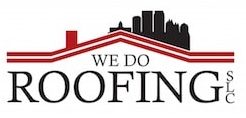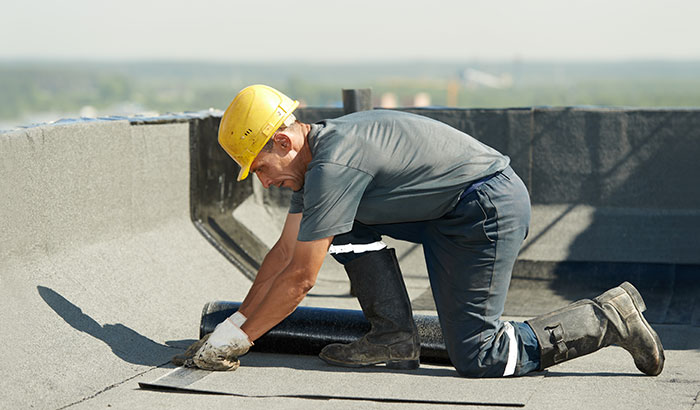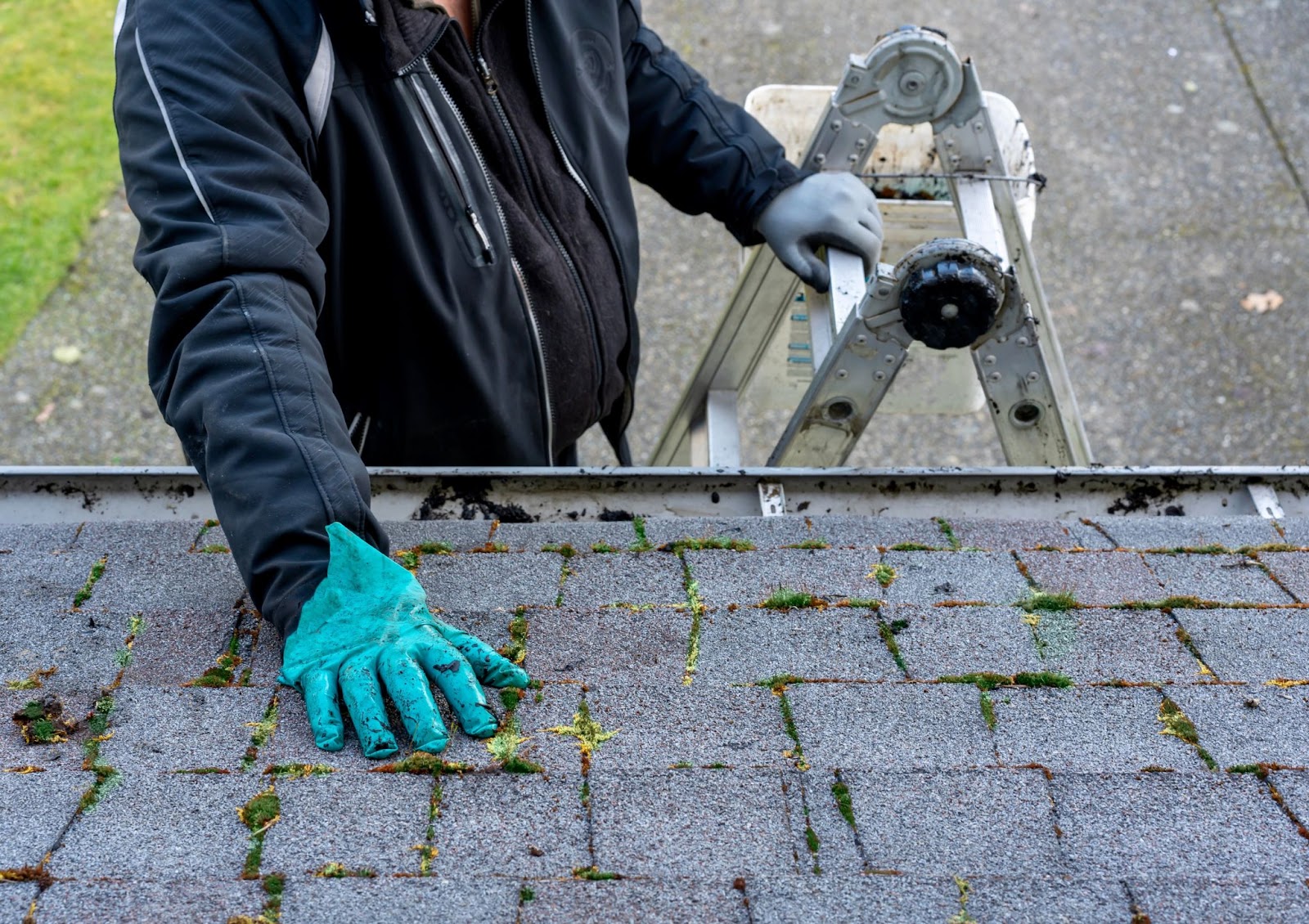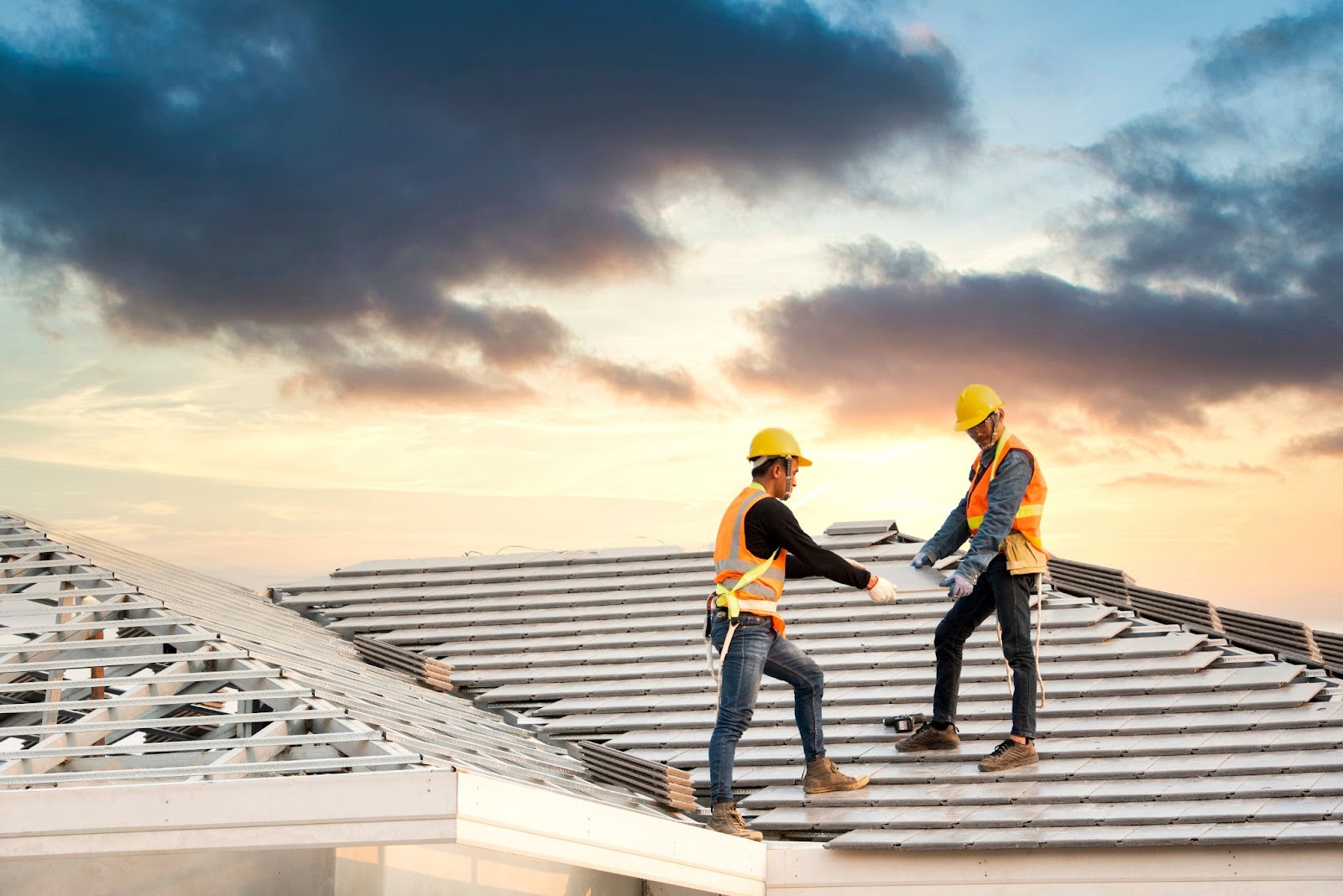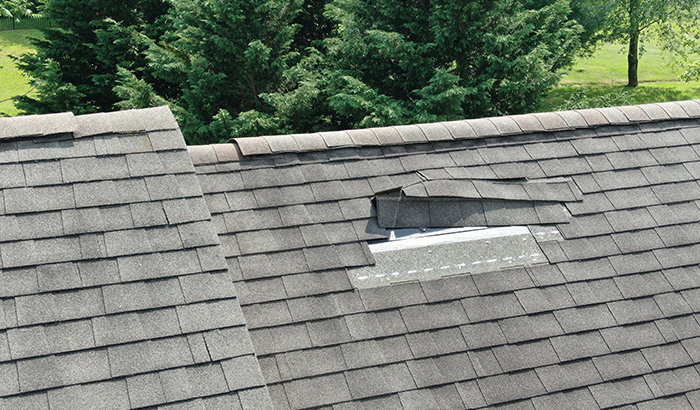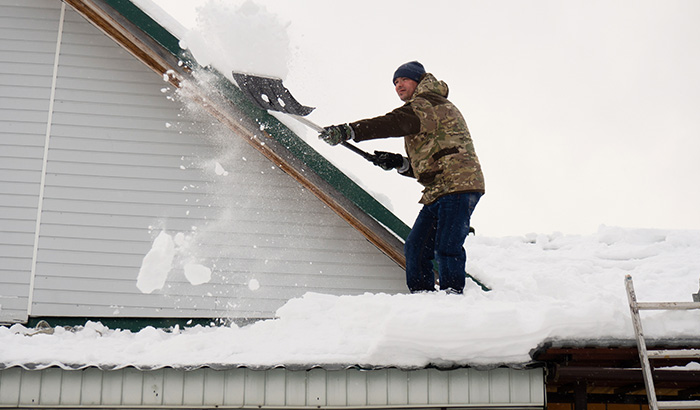Whether you’re re-roofing an existing roof, making a flat roof repair, or selecting materials for a new build, choosing the right material for your flat roof is essential.
Maybe the foundation aside, the roof is the most important part of your home. It is the first defense against elements and does a lot to keep you and your loved ones safe. That’s why making sure you select the right materials is key.
If your roof is flat versus pitched, it is even more critical that you make the right decisions. Among the many options out there, there are several that truly stand out against the rest. That’s why we’ve gathered the best types of roofing for flat roofs and everything you need to know surrounding the topic so you can make the best choice for your property.
Continue reading to learn about flat roof types and more below.
The 4 Best Roofing for Your Flat Roof
Selecting the best roofing materials is crucial to the integrity of your home, especially for flat roofs. While there are many roofing options out there, there are four that are exceptional for all flat roof types. Here’s what you need to know:
- TPO Membrane Roofing Material — TPO (thermoplastic polyolefin) is a common single-ply white membrane. It can be used in both residential and commercial properties. The white membrane reflects the sun’s heat rather than absorbing it, making it an eco-conscious choice.
TPO over a bedroom or another living area is great because it helps keep the space cooler. Just remember, if you have windows or balconies that look over this type of membrane, the white TPO membrane gets dirty fast and shows any sort of mess.
Property owners can expect to get close to 25 years out of a TPO membrane roof as long as it’s been installed correctly and properly maintained over the years.
- EPDM Membrane Roofing Material — EPDM, since ethylene propylene diene terpolymer is a mouthful, is a synthetic black rubber membrane perfect for medical and other commercial facilities.
Of course, it can also be used for residential properties, too. Though, unlike TPO roofs, the black material absorbs a considerable amount of heat, so using it over living or sleeping spaces may not be ideal. For non-living areas or garages, EPDM is a great choice for your flat roof. Another perk of EPDM is that it hides dirt and other messes well, unlike white membrane options.
EPDM is incredibly durable, and choosing it is essentially selecting a bulletproof rubber system. Thanks to EPDM’s durability, you can expect EPDM roofs (fully adhered, .06 thickness) to last up to three decades!
- PVC Membrane Roofing Material — A common flat roofing material used for residential and commercial properties is PVC (polyvinyl chloride). It’s a great option for low slope or flat roofs, especially those topping a bedroom or living area.
TPO and PVC roofs are very similar in their characteristics, such as being a white membrane and the installation process. Otherwise, their chemical makeup is different. PVC is a bit more flexible than TPO and has been around a lot longer. You can also expect to get around 25 years out of a properly installed PVC roof.
- Standing Seam Metal Roofing Material — Another great flat roof material option is the standing seam metal roof. It features a series of metal panels that lock together at the seams, allowing panels to expand or contract freely as the panels go through thermal expansion. The standing seam metal roofing system is one of the better flat roof types (as far as aesthetics go and color options).
Moreover, a standing seam metal roof can last up to 30 years. As long as your attic is adequately ventilated and the roof is installed correctly, there’s really no reason not to get at least three decades out of it. Under perfect conditions, your flat metal roof could last up to five decades! Just keep in mind the extended lifespan and elevated aesthetics will cost you, as this option is the most expensive of the four listed options.
How Much Money Does a Flat Roof Cost?
There are many factors that determine how much a roof will cost. For example, if it’s a simple flat roof repair, it will be much less than a total replacement or new construction. But, for the sake of conversation, we’ll try to give you a general idea.
Depending on the materials used, where you live, and the size of the project, you can expect prices to be between $13 and $18 per square foot for smaller membrane roofing projects and maybe a bit less for larger projects. Keep in mind installing insulation along with the roofing material will drive up the cost.
Which Flat Roofing Material is Right?
It’s hard to say which flat roof material is right for you and your home. It really comes down to preference and budget.
If cost is a concern, an amazing option is a membrane roof system. It’s important to take into consideration which rooms are below the flat roof. If it’s a bedroom or a living space, PVC or TPO are great options. If you have a larger budget, you want more say in the color and aesthetics, and you’d like to get a longer lifespan from your roof, the standing seam metal roof is a fantastic choice.
You really are safe if you select from any of these four roofing materials — they’re all great options! What’s most important is that you pick the material that fits with the look you want and your budget.
The Advantages and Disadvantages of Flat Roofs
If you’re considering a flat roof, it’s important to weigh the pros and cons of each. Here are five advantages of flat roofs:
- More Cost Effective Than a Pitched Roof — In terms of saving bucks, a flat roof system is much less expensive than a standard pitched roof. Pitched roofs can cost thousands and thousands of dollars more than their flat counterparts.
For example, depending on where you live, a 900 sq ft single-ply roof can run you between $6,500 and $7,500. In comparison, a pitched roof with the same area will cost a couple of thousand dollars more. So, if you want to save money upfront, a flat roof is the sure winner.
- Additional Outdoor Square Footage — One major perk of flat roofs is that you can enjoy extra outdoor space; moreover, it’s a space you can plan out. There are many ways to utilize the area on a flat roof. Here are a few great ideas:
- Rooftop Garden — In addition to being an attractive feature, gardens featuring flowers, fruits, and vegetables have many benefits to offer property owners and renters: between reduced stormwater runoff to increased building interior cooling to creating a pollinator-friendly haven, there are many benefits to enjoy.
- Relaxation Area — Enjoy an outdoor place to relax that could offer a bit more privacy than a backyard. You can fill the space with a hammock, hot tub, meditation station, or something else to promote relaxation.
- Entertainer’s Dream — If you like to entertain, a flat roof is a great place for friends and family to gather. Add a kitchen, couch, chairs, tables, and more to accommodate your guests and enjoy the party!
- A Spot for Your HVAC Unit — Flat roofs are the perfect spot to hold your commercial HVAC unit. Instead of taking up ground space and risking damage, you can increase protection and security by putting it up on the roof. Unfortunately, it’s not uncommon for a commercial HVAC unit to become damaged or vandalized by people, trees, and more.
Of course, before you can install any units, it’s essential for your roofing contractor to confirm the substructure and roof capacity. When flat roofs are not installed properly, having your HVAC up on the roof can create issues. But when they’re installed as they should be, the roof is a great place for them to be.
- Faster, Less Intrusive Installation Process — Did you know that, generally speaking, a flat roof takes less time to complete than a pitched roof? A flat plain means fewer materials and equipment needed, thus less time! Pitched roofs are more labor-intensive and require more materials.
This means that your daily operations will be temporarily stopped for a shorter amount of time, and you’ll be back to programming as scheduled sooner. Whether this is for commercial property or your home, this is good news!
- Perfect for Solar Panels — When comparing pitched roofs to a roof that’s flat, the latter is a much better location for solar panels. Installing solar panels is a great way to save energy, money, and the environment, and a flat roof allows you to make the most of them by optimizing the right angles, thus maximizing the money you spend.
While flat roofs are great, there can be some associated disadvantages. Here are some of those:
- Drainage Issues — Because of the potential drainage problems, it’s likely you’ll need to pay closer attention to a flat roof than you would a pitched roof (though pitched roofs require time and attention, too!).
A pitched roof, thanks to gravity, typically won’t have any issues draining and will do so easily. On the other hand, flat roofs that are not properly installed or planned can have low spots that lead to puddles that sit for days after rain or snow.
But when you hire a trusted and reputable roofing contractor to handle the installation process, this shouldn’t be an issue. A good roofing company will install a flat roof correctly, make a good maintenance plan that includes regular inspections, and back their services and materials with warranties. But even a properly installed flat roof will not drain as efficiently as a standard pitched roof.
- No Attic Space — A pitched roof gives a homeowner the option for an attic space. Flat roofs do not offer that option because the space simply does not exist. This means there’s less storage space in your home and less insulation, which could lead to extreme fluctuation in temperatures in your home or your commercial building.
- Overall Appearance — Of course, this comes down to opinion; however, the vast majority of homeowners prefer the appearance of a sloped roof compared to a flat roof. There are a lot more material and color options when property owners opt for a pitched roof.
- Snow Removal — Removing snow is a necessary part of a flat roof. Leaving snow can lead to issues such as blocked roof access, damage to drainage systems by repeatedly freezing and unfreezing, and more.
How Long Will a Flat Roof Last?
Generally speaking, under normal circumstances that include regular maintenance and care, a flat roof can last between 20 and 25 years. Most flat roofs that do not have regular maintenance will need a little TLC and attention right around the 13 or 14-year mark.
If your flat roof wasn’t installed correctly (read: poor workmanship) or the manufacturer’s guidelines weren’t followed, you’ll likely need to have a knowledgeable professional replace the roof rather than repair it. Of course, leaks can be fixed; however, you’re just delaying the inevitable: a flat roof replacement. All while ensuing damage to the rest of the house, which means more money spent on other repairs and replacements.
We Do Roofing SLC Can Help With Your Flat Roof!
Do you want a flat roof, need a flat roof repair, or need help with a pitched roof? At We Do Roofing Salt Lake City, we do it all and are here to help!
We Do Roofing SLC is Salt Lake County’s respected roofer with over 20 years of experience. We are a licensed roofing contractor and provide expert roof repairs, new construction roofs, re-roofing, and more for all commercial and residential customers. Our trusted team is ready to help residential and commercial buildings in Salt Lake City, West Valley City, Murray, West Jordan, and many other neighboring cities along the Wasatch Front.
Contact We Do Roofing SLC for a flat roof quick quote today.
